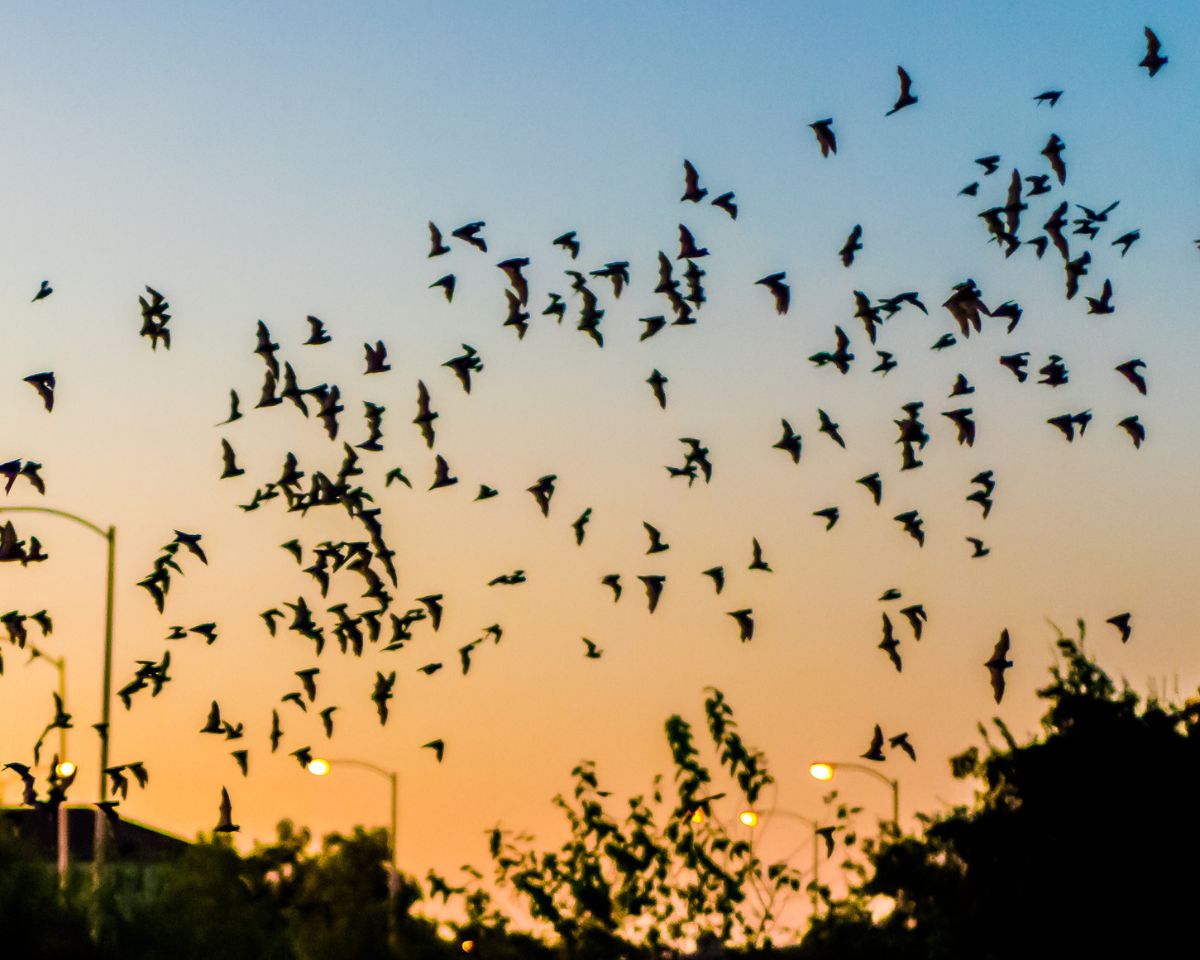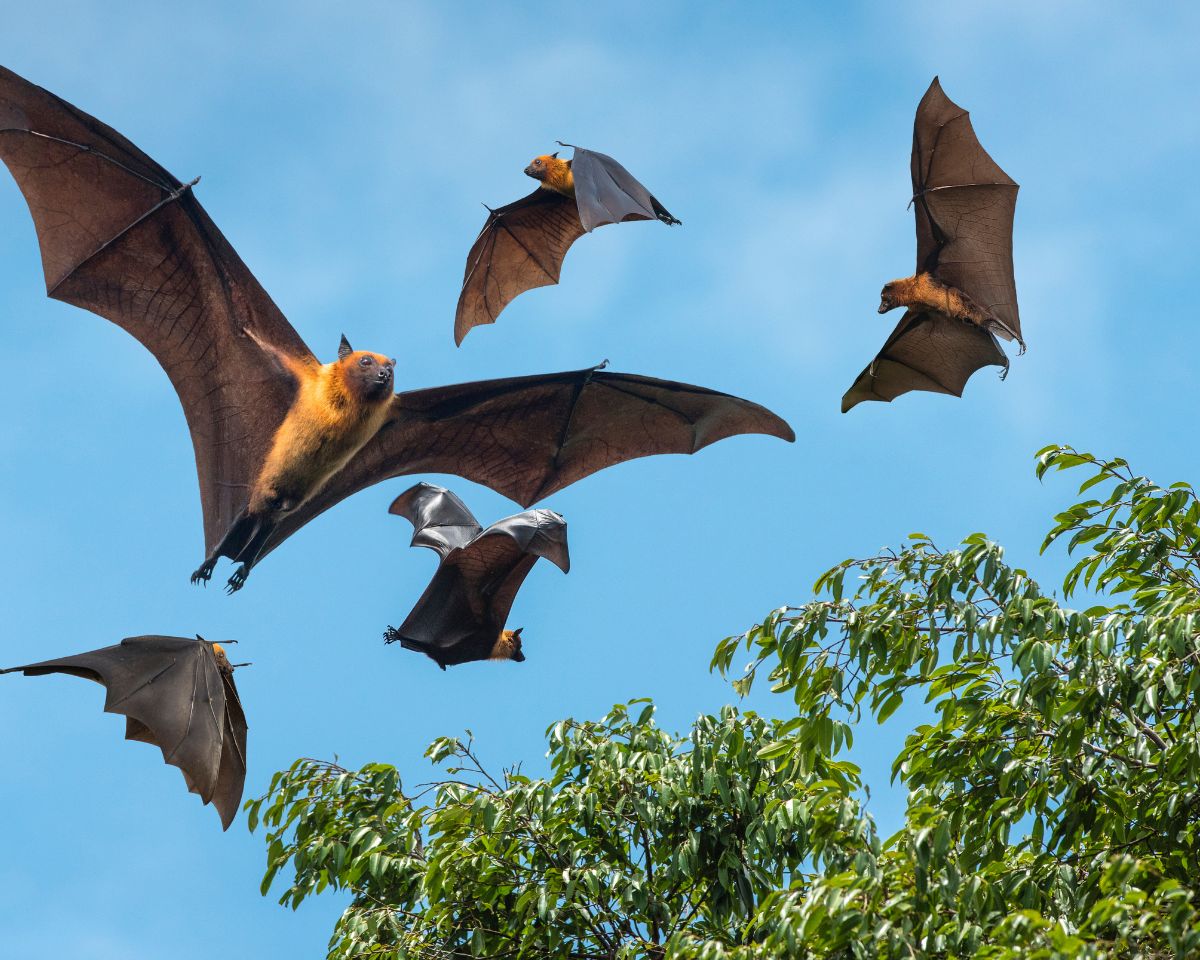Bat Migration
Bat migration is the seasonal movement of bats from one location to another, typically in search of food or suitable breeding grounds. This phenomenon is observed in various species of bats and can occur over short or long distances, depending on the species and the environmental conditions.
Bats migrate thousands of miles each year, following ancestral routes and patterns that have captivated scientists for years.
Every year, bats embark on a remarkable journey known as bat migration, traveling from their summer roosts to winter homes. These migrations are carefully planned and executed, with bats traveling hundreds or even thousands of miles in search of food and shelter.
When bats migrate to their winter homes, the timing of their journey is crucial. This timing is mainly determined by the availability of food and the amount of daylight.
Bat Migration Patterns
Bat migration patterns are a captivating phenomenon, as these creatures embark on incredible journeys spanning thousands of miles each year, following ancestral routes and patterns. Scientists have long been intrigued by the intricacies of bat migration.
These nocturnal creatures undertake extensive travels in search of food, mates, and more suitable living conditions. Their migration patterns are influenced by various factors, including climate, food availability, and roosting site locations.
A particularly fascinating aspect of bat migration is their communication during these journeys. Researchers have discovered that bats utilize acoustic signals, known as acoustic bat activity, to navigate and locate roosting sites.
Emitting high-pitched calls and interpreting the resulting echoes, bats accurately determine the distance and direction of their destination. It is remarkable to witness the advanced communication skills of these small creatures, enabling them to undertake precise and accurate migrations covering thousands of miles.
Bat Migration Routes
Bat migration is a remarkable natural phenomenon occurring every year as bats journey from their summer roosts to winter homes.
These migration routes are carefully planned and executed, allowing bats to travel hundreds or even thousands of miles in search of food and shelter. Bats select routes based on the availability of essential resources, such as food and water, often leading to areas abundant in insects.
While some bat species follow consistent migration routes, others adapt their paths based on environmental conditions or other factors. Human activities, like habitat destruction, light pollution, and the presence of wind turbines, can disrupt these routes, affecting bats’ navigation and causing disorientation.
Understanding bat migration routes is crucial for protecting their populations and ensuring their thriving presence in natural habitats.
Bat Migration Timing

Bat migration timing is critical as these creatures embark on their journey to winter homes. It is largely influenced by food availability and the duration of daylight.
As daylight diminishes, bats are prompted to begin their migration to wintering grounds. However, the specific timing varies among bat species. For example, Myotis bats migrate from late August to early October, while the hoary bat migrates later, around late October.
Researchers employ acoustic detectors to track the timing of bat migration by monitoring flight calls. This technology provides valuable insights into migration patterns, including the bats’ arrival and departure from roosts.
Understanding bat migration timing is essential for managing populations and protecting habitats.
Bat Migration Distance
Certain bat species, like the myotis daubentonii, can cover up to 600 miles in their search for warmer climates during the winter months. These remarkable travelers have been the subject of extensive migration studies.
Other species, such as the myotis grisescens, exhibit more localized migration patterns, journeying just a few hundred miles to reach their winter homes. Yet, even this shorter distance presents challenges, as bats must navigate changing weather, evade predators, and secure sufficient resources en route.
Bat migration showcases incredible endurance and adaptability, inspiring ongoing scientific exploration into their behavior and survival strategies.
Bat Migration Causes
As temperatures drop, bats face challenges in finding food, relying on their fat reserves to survive. This instinct for survival drives them to migrate to warmer climates where food is more abundant.
But what determines the routes bats choose during their migration? Research shows that factors such as wind patterns, temperature changes, and rotor activity at turbine height play a role in directing bat migration.
Studies indicate that bats tend to migrate along wind corridors while avoiding areas with high rotor activity. Understanding these factors helps protect and conserve bat populations during their migration.
Bat Migration Impacts
Bat migration plays a crucial role in maintaining ecosystem balance by controlling insect populations, including pests. The decline in bats due to habitat loss and pesticide use has led to an increase in insect populations, causing crop damage and impacting human health.
Bats also have a significant economic impact, contributing to industries such as tourism, agriculture, and forestry. However, their migration patterns can pose challenges for the wind energy industry.
Wind turbine operations can harm bats, and their presence can disrupt turbine efficiency. Therefore, it is essential to consider the impact of wind energy on bat migration and develop strategies to minimize negative effects on bats while maximizing the benefits of renewable energy.
Bat Migration Adaptations

One of their most critical adaptations is the ability to store fat reserves. During migration, bats rely on stored fat to fuel their flight and maintain body temperature, as they must fly for extended periods without feeding. Certain species, such as the m daubentonii, can double their body weight by accumulating fat before migration. This adaptation ensures they have sufficient energy to complete their journey and survive the winter months.
Another adaptation that aids bats during migration is their exceptional navigation abilities. They utilize a combination of visual, magnetic, and celestial cues. By perceiving the Earth’s magnetic field, bats orient themselves. They also utilize the positions of stars and the sun to determine their location. These cues allow bats to navigate accurately and find their way to winter hibernation sites or breeding grounds.
These remarkable adaptations empower bats to overcome the challenges of migration and thrive as a species.
Bat Migration Challenges
Bats possess unique adaptations for their long-distance migrations. However, their journey is not without significant challenges.
One of the greatest obstacles bats face during migration is the presence of wind turbines. These structures are often located in areas that intersect with bat migration routes, posing a deadly threat to these flying mammals.
Bats are particularly vulnerable to wind turbines due to their attraction to the turbines’ low-frequency sound emissions. As bats approach the turbines, they risk colliding with the blades or experiencing sudden changes in air pressure, leading to internal injuries.
The impact of wind power on bat populations is a growing concern, and researchers are actively working to develop solutions to reduce bat fatalities caused by wind turbines.
Bat Migration Benefits
Here are three reasons why bat migration brings significant benefits:
- Pollination: Bats play a crucial role as pollinators, particularly in tropical regions where they feed on flower nectar. Their pollination efforts are vital for many plants, including those crucial for food production. Without bats, the ecosystem would suffer, leading to a decline in crop yields.
- Pest Control: Bats contribute to effective insect control. With the ability to consume up to 1,000 insects per hour, including mosquitoes, beetles, and moths, they serve as natural pest controllers. This helps reduce reliance on pesticides, which can harm the environment.
- Seed Dispersal: Bats serve as essential seed dispersers. After consuming fruit, they excrete the seeds, facilitating the spread of plant species across different environments. This process is vital for biodiversity maintenance and enabling plant species to adapt to changing conditions.
Overall, bat migration captivates observers while playing a pivotal role in sustaining ecosystem health. By building up their fat reserves and embarking on long journeys, bats contribute to pollination, pest control, and seed dispersal.
So, when you witness a bat in flight, remember its indispensable role in our ecosystem and the valuable benefits they provide.
Bat Migration Conservation
It is crucial for maintaining the balance of our ecosystems to protect bat habitats and populations, as advocated by renowned bat ecologist Merlin Tuttle. Tuttle has studied bat ecology, behavior, and conservation for most of his career.
Bat migration plays an essential role in pollination and pest control, underscoring the significance of ensuring that their migration routes remain undisturbed.
Unfortunately, bat populations have been declining in recent years due to habitat loss, climate change, and human activities such as the construction of wind farms. In response, conservation efforts guided by experts like Merlin Tuttle have been initiated to protect bat populations and preserve their critical migration routes.
Collaborating with wind farms is one approach to minimize bat fatalities caused by turbines. Strategies such as limiting turbine operation during peak migration times or implementing innovative technologies that emit sound or light to deter bats from approaching too closely are being explored.
Prioritizing the conservation of bat habitats through land protection and reforestation efforts is crucial to ensure the survival of these fascinating creatures and uphold their irreplaceable role in maintaining the delicate balance of our ecosystems.









